Essay 6
The architect's role in energy efficiency
Dr Judit Kimpian, AHR Architects Ltd

At the time of writing this chapter, the planet has just experienced another hottest year on record. As the reality of climate change is dawning on most, architects are increasingly aware of their responsibility to mitigate its impacts and reduce greenhouse gas emissions. With buildings responsible for more than 40% of carbon emissions, architects should have a major role in transforming the energy performance of the building stock.
Energy use and architecture
Expertise in energy-efficient construction is often largely considered by architects as a specialism ‘bolted on’ to education and professional practice.43 In the wider construction industry, the energy consumption of buildings is often perceived as presenting a technological challenge, with the architect’s role confined to the specification of the building envelope.
Paradoxically, architectural design is one of the most important factors in energy efficiency. Demand for energy is driven by occupant needs for wellbeing and productivity in buildings. We use energy to power mechanical and electrical systems that enhance a building’s functionality beyond what its fabric, configuration and materiality are capable of providing passively. Catering for occupant needs without the active consumption of energy is therefore key to reducing demand.
Architects, whose design focus is occupant experience, should be leading the campaign for greater energy efficiency. Instead, the profession is becoming increasingly sidelined in one of the fastest-growing market segments of the construction sector. Architectural chambers from across Europe are reporting that the words ‘design’ and ‘architecture’ are not usually included in the scope of works for energy efficiency. Feedback from the 30-plus members of the Architects’ Council of Europe, representing more than half a million architects in the EU, is that the role of the architect is increasingly undermined by a legislative framework that has been seduced by technological fixes.44
AHR has invested in energy-efficiency research since 2006 to support the work of architectural teams across the practice who found it increasingly challenging to design for long-term adaptability, resilience and occupant comfort.
An initial survey of architects inside and outside the practice45 showed the following:
- that the construction sector’s imperative was to comply with Building Regulations only
- that there was a lack of robust data that could underpin the definition of well-performing buildings and related benchmarks
- that passive design features were routinely ‘value engineered’ to make way for mechanical means of providing occupant comfort
- that energy models and performance calculations were not shared across project partners
- that professional-indemnity insurers actively discouraged practices from collecting feedback from buildings in use
- that the legislative framework did not require the prediction, tracking and validation of the operational energy consumption of a building.
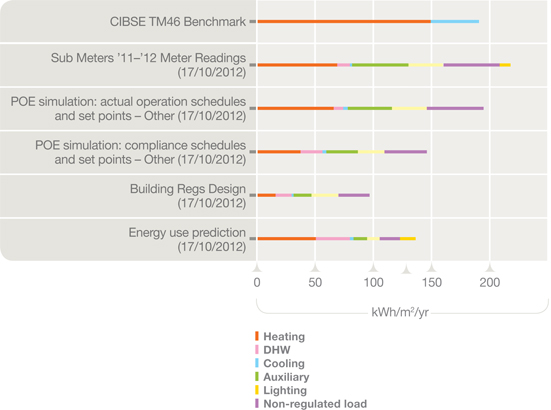
01 Stockport Academy CarbonBuzz energy bars
To address these findings, the R&D team at AHR set up a number of focused research projects.
The first one of these was the RIBA/CIBSE CarbonBuzz platform,46 gathering crowd-sourced energy-use data for benchmarking buildings from design to operation. CarbonBuzz addresses the chronic lack of performance data, gathering a large enough sample to evidence the sizeable gap between the expected and achieved performance of buildings. To understand the specific barriers to better energy performance, the practice secured projects both in Innovate UK’s Design for Future Climate (DfFC) and building performance evaluation (BPE) programmes. Building on the lessons learned from these studies, AHR completed the UK’s first design project to successfully implement an energy performance contract targeting operational energy use, at Keynsham Civic Centre (Figure 02).
Buildings in operation – the energy performance gap
The UK led the way in Europe when it implemented the Energy Performance of Buildings Directive (EPBD), requiring public buildings to report and benchmark annual energy consumption. A new focus on operational performance began to emerge, with many leading commercial organisations voluntarily benchmarking their buildings based on CIBSE’s TM4647 guidance, which underpins the national Display Energy Certification programme. In the wake of this initiative a number of groundbreaking research programmes48–52 have led to an EU-wide debate on the methods used to account for building carbon emissions and the gap between the expected and achieved performance of buildings.
An important outcome of Innovate UK’s recently completed BPE study was that overall there was no discernible relationship between the CO2 emission figure calculated for regulatory purposes and actual emissions, with dwellings emitting on average 2.6 times53 that of the compliance figure, while the CO2 emissions from non-domestic buildings were 3.8 times that.54
Compliance calculations only consider energy consumed by fixed building services (heating, hot water, ventilation, cooling and lighting), under fixed hours of use and intensity. They do not account for the energy used by occupants for plug-in appliances or equipment. To be able to compare like-for-like, compliance calculations need to be adjusted to reflect actual operating conditions and to include plug-loads.

02 Keynsham Civic Centre
A recent study of education buildings,55 which compares a forecast of operational energy use (as opposed to a compliance calculation) with measured data, shows an average of 1.5 times higher operational energy use than forecast. The variation in the size of the performance gap between different studies is due in part to the lack of clarity on whether compliance calculations or energy use forecasts are used as a design-stage baseline. A 2012 report by the RIBA/CIBSE energy benchmarking platform CarbonBuzz, which compared energy forecasts with actual energy use across the education and office sectors, showed on average a factor increase of 1.5 times for heat and 1.8 times for electricity consumption.56 These latter estimates of the scale of unexpected energy use are likely to be more robust and are still alarmingly high.
There is a growing consensus among the participants of the CarbonBuzz programme that the more complex a building in terms of heating, ventilation and air-conditioning (HVAC), the greater the risk of excessive energy use.57 Low- and zero-carbon technologies, specified to reduce carbon emissions, are often not used or are under-utilised. ‘Smart’ controls are proving to be unmanageable for installers and operators, and ‘smart’ metering equipment installed to monitor energy consumption ends up mostly deficient, making diagnostics extremely costly. The more automation there is in a building, the greater the likelihood of technical malfunction, excessive energy use and poor occupant satisfaction.58
This does not appear to be a one-off occurrence. Most non-domestic buildings studied under the Innovate UK BPE programme experienced problems with their BMS.59
AHR’s Research and Development team carrying out the detailed evaluations of seven buildings estimated the cost of unused, under-utilised mechanical equipment60 to amount to between 2% and 5% of capital cost for a typical education building. If this small sample is representative, over £100 million of the government’s past ten years’ £5 billion investment in schools may have been poorly invested.
Omitting the validation of operational performance from Building Regulations has also meant that any issues with energy consumption, usability and indoor environmental quality go unnoticed. In turn, investment and design effort are not focused on improving occupants’ experience of a building, but on meeting theoretical performance criteria only.
Implications for architecture – passive design
Looking in more detail at AHR’s study of five education and two office buildings under Innovate UK’s BPE programme, a clear link between simplicity and energy use emerged. Smaller, less complex buildings, or buildings relying largely on passive measures for ventilation, cooling and daylighting, showed smaller performance gaps and substantially lower energy consumption (Figure 03).

03 Summary of occupant feedback (BUS survey) for AHR projects
Providing comfortable indoor environments passively through a building’s configuration is part of the essential toolkit of the architect. By considering floor-to-floor heights, circulation and buffer zones, spatial adjacencies, the placement of thermal mass and openings in the building fabric, we are able to mediate daylight, fresh air and energy use. These are not just indoor environmental design features. They provide opportunities to express the individual character of a building and meet the needs of its occupants. Yet many features that improve passive performance are commonly cut back early or compromised during ‘value engineering’, where mechanical services are increasingly selected to provide ‘flexible’ indoor environmental control.
Complex systems are not just complicated to design, coordinate, install and operate, but often fall into disrepair due to their high maintenance costs, putting occupants’ health at risk. At the start of a project a routine evaluation of the likely whole-life impacts of energy-efficiency solutions is needed to support a more robust approach. Passive measures have an important role in reducing energy demand regardless of the systems used to enhance thermal comfort and air quality. Importantly, where an investment model does not cater for the higher capital and installation costs or the long-term maintenance and operating costs associated with automated systems, passive measures seem to present much greater value.

04 Results of Building Use Survey

05 The three pillars of building performance
From energy use to building performance
In the course of the BPEs carried out by AHR, the R&D team faced questions about the intense focus on energy performance. After all, in architectural terms, a well-performing building is one in which minimal energy and resources are required to provide a comfortable, safe, healthy and productive environment for occupants. By the end of the study a more holistic view of energy efficiency had emerged, one that tackled all three pillars of building performance: resources used for achieved environmental quality indicators and occupant satisfaction (Figure 05).
Performance can be measured by collating metered parameters with qualitative feedback from occupants. These typically include daylight, temperature, CO2, relative humidity and pollutant levels. The recently developed WELL Building Standard61 sets out a broader group of indicators for occupant health and indoor environmental quality. Qualitative feedback is usually gained through surveys, such as the BUS (Building Use Studies) developed by the Usable Buildings Trust,62 or others.
Studying all three pillars of building performance proved to be challenging. The reconciliation of forecast and achieved energy use – including gaining an understanding of where, when and how energy is used in a building – was in itself an arduous process. The prediction and validation of the achieved indoor environmental quality (IEQ) was still firmly in the realm of academic research.

06 Stockport Academy
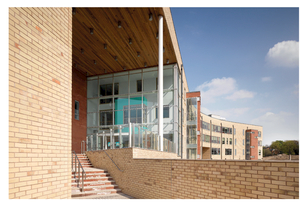
07 Academy 360
However, the systematic gathering of feedback from buildings in use must be a priority for architects. Our research shows that a building’s design and functionality can have a greater impact on occupant perception of comfort than the actual measured temperature and air quality. We also found that when occupants are satisfied with a building’s design and it meets their needs they demonstrate an increased comfort range for temperature and air quality.63
Two case studies from AHR’s BPE portfolio, Academy 360 and Stockport Academy, illustrate that occupants can have drastically different perceptions of very similar measured temperature and CO2 levels. The two buildings were in the same region, with the fundamental difference being occupant satisfaction with design and functionality. Where occupants were less satisfied with these, their perception of physical comfort was significantly lower than the benchmark. In the building where occupants were happy with design and usability, physical comfort was rated higher than the benchmark. Architecture clearly had a major role to play in occupants’ perception of comfort and wellbeing (Figures 06–07).
The issue of user perception is especially pertinent in the context of active versus passive controls for thermal comfort and air quality. There is growing regulatory and industry pressure to narrow the criteria for comfort and well-being in offices and schools, pushing more designs towards active HVAC solutions. The feedback from BPEs indicates that this often leads to higher energy consumption and a risk of compromised building resilience (e.g. air-handling units not working, and non-operable windows). Conversely, it may be more beneficial to invest in architectural quality to provide greater flexibility and adaptability and to meet the evolving needs of occupants.
More data is needed to statistically demonstrate the key factors influencing energy efficiency as well as the relationship between design and measured versus perceived internal environmental quality. Researchers require significantly more feedback from buildings and occupants to do this.
The role of feedback in legislation
It is considered anathema in any design profession to miss out on feedback from a product’s performance in use. Yet in architecture, the use phase has only been re-incorporated into the RIBA Plan of Work since 2013, and there are no recognised standards or scopes of work for what should be undertaken. Architects cite the lack of fees and concerns over liability as the main reasons for not engaging beyond completion. However, architects have much to gain from pushing for the measurement and verification of building performance. Evidence shows that where there is a requirement to target operational building performance, there is inherently more design emphasis on the way in which occupants will interact with the completed buildings. AHR found that feedback from BPEs engaged the wider practice and created an appetite for finding ways of improving building performance.

08 Compliance vs measured energy use

09 Tremough Innovation Centre
On projects where the BPE team were involved prior to completion, such as Tremough Innovation Centre, there were already significant benefits in terms of commissioning and handover (Figure 09).64
Another advantage of planning for feedback early on was that it reduced the cost of a building evaluation. AHR found that where the gathering of operational data was built into the project framework, the time and cost required to carry out an evaluation could be reduced by more than 70%.
Evaluating a building in use requires a building log book, comprising a building user manual, information on design intent, a prediction of detailed energy use and the assumptions behind this. This provides a baseline for operational energy that can be used for benchmarking and diagnostic purposes. Although a requirement for compliance with Building Regulations, this information has been found missing on an overwhelming number of projects participating in Innovate UK’s BPE programme.
Incorporating the evaluation and reporting of building performance early on creates a vested interest for all project parties to collaborate and prepare information relating to energy consumption. As a consequence, associated responsibilities for monitoring are assigned, meters are correctly installed and commissioned, and project log books and building manuals are completed – as are operation and maintenance (O&M) manuals. Starting a BPE immediately after completion has been found to raise the chances of a building project being completed as designed.
Embedding such feedback into the existing framework of legislation is technically possible for non-domestic buildings65 – the main hurdle to overcome is to adjust reporting metrics so that design-stage calculations can become comparable to measured energy use. At EU level there is work being done to address this as part of the Energy Performance of Buildings Directive, recast also as the EU-wide Voluntary Certification programme, which will allow building energy use to be compared across national boundaries.
National governments and the wider construction sector are beginning to recognise that mandating disclosure may actually ease the legislative burden while improving performance cost-effectively. For those making the leap, the rewards are there to be reaped. Shifting focus away from box-ticking towards effective means of improving actual building performance can raise productivity across the supply chain and deliver value for money for investors and operators alike. It seems that the business case for investing in energy efficiency has been there all along – it is just a question of looking at the right data to see it.66
The realisation that energy-performance contracting of design projects can promote architectural quality is beginning to change architects’ take on energy legislation. It has already provided an impetus for organisations such as the Architects’ Council of Europe to campaign for the disclosure of building performance data to be incorporated into new updates of EU energy legislation, such as the Energy Performance of Buildings Directive that drives Building Regulations in all EU member states.
The challenge for the built-environment sector is to improve well-being and productivity in buildings while lowering energy and resource use. Performance data and feedback needs to become ubiquitous if we are to meet this aim. Whatever the ultimate solution, the good news is that targeting building performance in use is great for building occupants, for architecture and for the climate.
Disclosure – a driver for excellence
AHR, together with Max Fordham engineers, has piloted an approach based on analysing feedback and performance data for Keynsham Civic Centre (KCC) and One Stop Shop, a major regeneration project for Bath & North East Somerset Council. To achieve greater certainty in reducing running costs, the client set a requirement for an operational Display Energy Certificate (DEC) rating of ‘A’ from the outset. Building on feedback gathered from BPEs, the team embedded the measurement, verification and disclosure of operational energy-use data into the contractual framework for the project.
Aspects of the design that contributed to the achievement of performance targets, including occupancy scenarios and operating conditions, were recorded in an Energy Risk Register that was updated at key project stages, along with detailed energy-use forecasts. Shifting the focus from compliance to actual performance allowed the architectural design to work harder to support occupant well-being, building usability and long-term resilience. Since its completion in 2015 the project has received major national design awards, including a British Council for Offices Award, and is already showing leading performance among UK offices.
KCC is the first project in the country to take this approach, supported by the Soft Landings framework.67 However, other reporting frameworks that have been implemented globally also demonstrate real improvements in energy performance. The common thread between these is the emphasis they place on the measurement, verification and disclosure of performance in use.
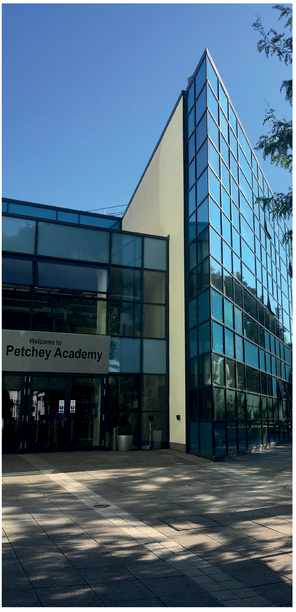
10 Petchey Academy
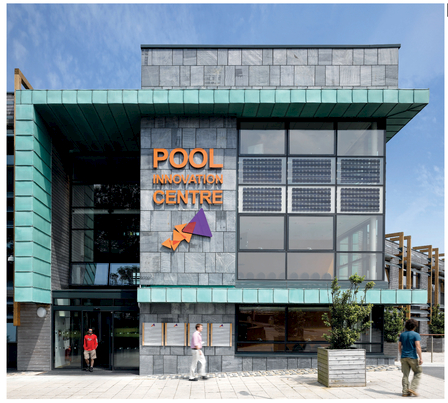
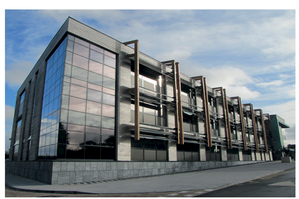
12 Pool Innovation Centre
